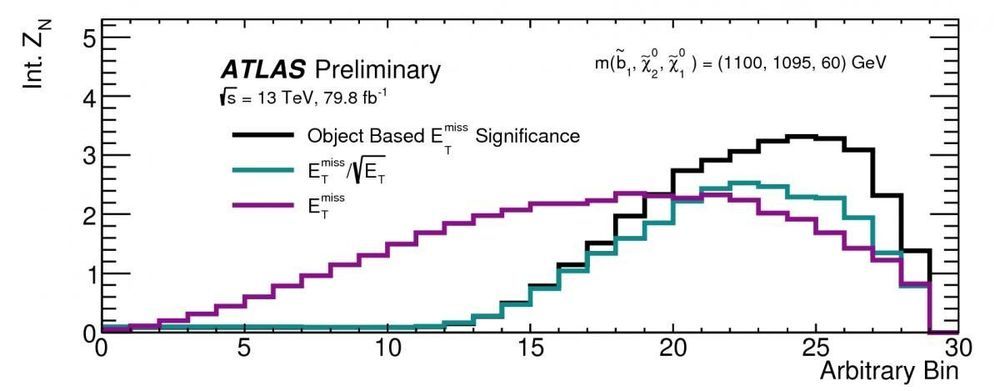Page 8815
May 14, 2019
How stressed-out gut bacteria may trigger autoimmune response
Posted by Xavier Rosseel in category: biotech/medical
Stressful life events most likely contribute to autoimmune diseases, but scientists don’t have a deep understanding of the underlying chain of events. A study on mice published this week in mSystems suggests that the gut microbiota may play a significant role in that connection. Researchers found that the onset of stress caused changes in the intestinal bacteria that, in turn, stimulated the activity of immune cells in a way that increased the likelihood that the body would a…
Chronic social stress in mice induces the expression of virulent genes in the gut microbiota. The altered microbiota increases the presence of effector T helper cells in the lymph nodes and induces myelin autoreactive cells. Exposure to chronic stress, therefore, may increase the risk of developing autoimmune diseases for some individuals with a susceptibility.
May 14, 2019
Moon: Exploration is in our DNA and our closest celestial friend, the Moon, is a treasure chest of science!
Posted by Michael Lance in categories: biotech/medical, science, space
As we look forward to #Moon2024 mission, we’re sharing these highlights of our favorite neighbor taken from the International Space Station and Earth:
Photographs of the moon taken by astronauts in space and individuals on Earth.
Show more.
May 14, 2019
SpaceX’s Orbital Internet Could Restore Net Neutrality
Posted by Quinn Sena in categories: internet, space travel
May 14, 2019
Automated Logic Wins AHR Expo Innovation Award
Posted by Quinn Sena in categories: innovation, robotics/AI
ALC’s new OptiFlex virtual integrator has been named the winner of the AHR Expo Innovation award in the building automation category.
5:30 pm.
May 14, 2019
Humans Genetically Engineered To Be Super Intelligent Could Have An IQ Of 1000
Posted by Quinn Sena in category: genetics
May 14, 2019
ATLAS experiment sets strong constraints on supersymmetric dark matter
Posted by Quinn Sena in categories: cosmology, particle physics
Dark matter is an unknown type of matter present in the universe that could be of particle origin. One of the most complete theoretical frameworks that includes a dark matter candidate is supersymmetry. Many supersymmetric models predict the existence of a new stable, invisible particle called the lightest supersymmetric particle (LSP), which has the right properties to be a dark matter particle.
The ATLAS Collaboration at CERN has recently reported two new results on searches for an LSP that exploited the experiment’s full Run 2 data sample taken at 13 TeV proton-proton collision energy. The analyses looked for the pair production of two heavy supersymmetric particles, each of which decays to observable Standard Model particles and an LSP in the detector.
May 14, 2019
Half-life of xenon 124 is about 18 sextillion years
Posted by Quinn Sena in category: futurism
A new finding puts the half-life of xenon 124 close to 18 sextillion years.
That’s 18,000,000,000,000,000,000,000.
Existing theory predicts the isotope’s radioactive decay has a half-life that surpasses the age of the universe “by many orders of magnitude,” but no evidence of the process has appeared until now.
Continue reading “Half-life of xenon 124 is about 18 sextillion years” »
A googolplex is 1010^100, where the exponents are solved from the right. The exponentiation symbol (^) means the number just to the left multiplied by the left number’s self the number just to the right number of times. If the left number is 10, that means 1 followed by the right number of zeros. That is 10googol=1010,000,000,000,000,000,000,000,000,000,000,000,000,000,000,000,000,000. So the answer to your question is a-googolplex-and-1=(1010^100)+1.
May 14, 2019
Moss capable of removing arsenic from drinking water discovered
Posted by Quinn Sena in category: sustainability
Circa 2018
A moss capable of removing arsenic from contaminated water has been discovered by researchers from Stockholm University. And it happens quickly — in just one hour, the arsenic level is so low that the water is no longer harmful for people to drink. The study has been published in the journal Environmental Pollution.
The aquatic moss Warnstofia fluitans, which grows in northern Sweden, has the ability to quickly absorb and adsorb arsenic from water. The discovery allows for an environmentally friendly way to purify water of arsenic. One possible scenario is to grow the moss in streams and other watercourses with high levels of arsenic.
Water in mining areas often contaminated
Continue reading “Moss capable of removing arsenic from drinking water discovered” »
















